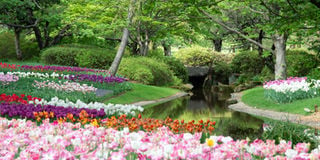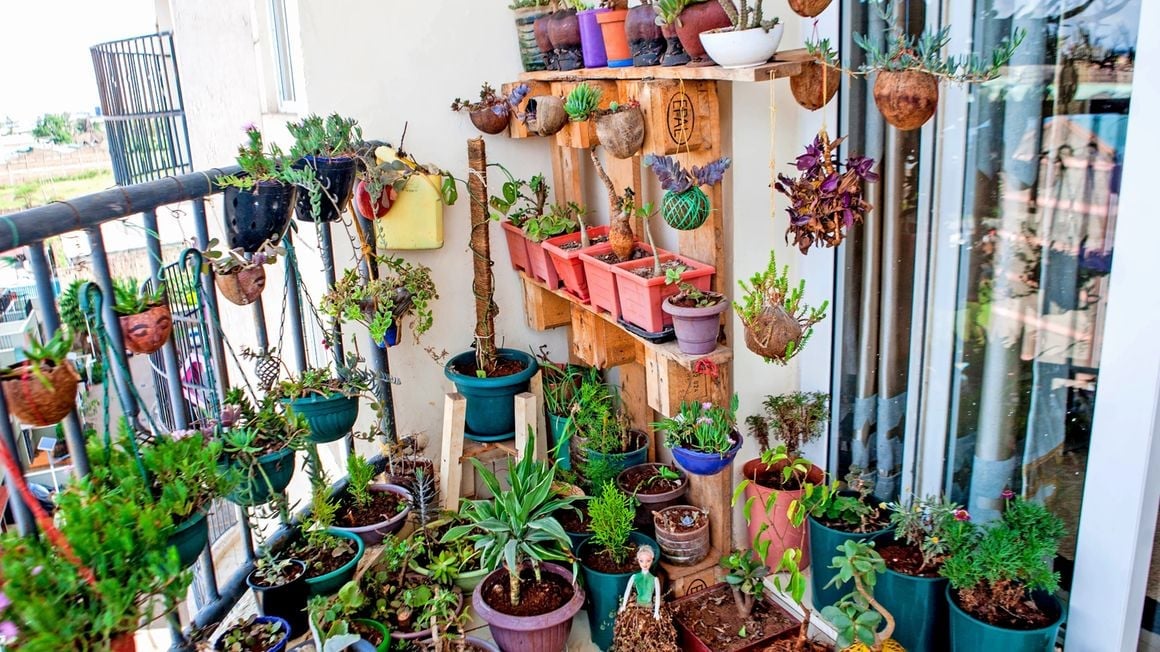Prime
How to include colour to your garden design

The size of your garden, the activities it supports and its orientation will determine the kind of plants and consequently the colours. PHOTO/UNSPLASH.COM.
What you need to know:
Whether your aim is to add a splash of colour to your backyard or to create a show stopping garden, you can never go wrong with choosing and sticking a colour scheme. Be cautious about your choices since different colours create different outcomes.
A colour scheme is an aesthetic way you can make your landscaping stand out. Knowing how to blend colours properly makes a difference between an expertly designed garden and a chaotic mess. Understanding how to use colours properly will create a cohesive and beautiful outdoor space. Different colours trigger different emotions such as joy, excitement and peace.
Colour and emotions
Every colour in your scheme evokes specific emotions. If you want a garden full of invigorating energy, choose warm colours such as red and yellow, while cool colours such as blue and green create a sense of calm. Neutral colours such as white and gray can be comforting as well as spark creativity. Ultimately, the colours you decide to go with can either enhance the look of your landscaping or make it look unkempt and unplanned.
Getting started
Before choosing a colour scheme, begin by evaluating your space. The size of your garden, the activities it supports and its orientation will determine the kind of plants and consequently the colours your garden is able to enjoy.
Start with the base, which in this case is green. Green can safely be used as the foundation while the other colours become complimentary. For instance red and green, violet and yellow, and blue and orange.
When used together, these colours play off of each other to create visual tension and contrast. However, because of their attention-grabbing nature, use them carefully so as not to overwhelm the overall design.
You can choose a monochromatic scheme, where different shades of the same colour are grown together to create a harmonious effect.
Or you can pair colours that appear next to each other on the colour wheel such as reds and oranges to create an analogous scheme.
Also choose colours that blend in with other features on your property such as your house colour, walls, furniture and fence.
As tempting as having a riot of colour can be avoid using more than two or three main colours. Using too many different colours can make the garden look cluttered or lacking cohesion. Other colors can be used sparingly for pops of contrast and to enhance the main colours.
Though following expert colour schemes is a good starting point for introducing colour in your garden, do not limit yourself to those rules. Since you are creating a garden for you and your family give your favourite colours priority. This will create an environment you will enjoy and want to spend more time.
Plants that add colour
There are several plants you can use to create a strong and colourful base for your garden. Here are some plants that will add a burst of colour to your garden.
Bird of paradise
Commonly referred to as Bird of paradise due to its flower resembling a bird, the Strelitzia reginae is a stunning plant species. Its exotic tropical flowers in fiery oranges and fiery reds to brilliant blues and sunny yellows will add flamboyance and extravagance to any garden.
In addition to the colours, this plant stands out for its shape which resembles a tropical bird in flight, with petals that elegantly fan out as wings and a beak-like structure that juts out proudly. In some cultures, the Bird of Paradise flower is believed to bring good luck and prosperity. So, having these beauties in your home or garden might just be a secret ingredient for good fortune.
Canna lily
The canna lily is popular for its bold foliage, golden flowers with dark orange speckled throats, atop erect flowering stalks. Their dramatic foliage of large, lance-shaped, striped green and gold leaves, will not only add colour but character too.
Bleeding heart
Bleeding heart is a perfect accent plant in any garden. With its unique flower shape, the plant can grow to a height of 80cm and has arching stems from which the unique flowers hang. During the flowering period, each stem bears eight to twelve individual heart-shaped flowers, each with a drop-shaped appendage, which add fascination to your garden.
Bougainvillea
The Bougainvillea with its vibrant display of colour, comes in various shades, including pink, red, and purple. Known for its stunning bracts that surround the small flowers, the bougainvillea has a visually striking appearance.
Lavender
Lavender will satisfy your sense of smell and sight. In addition to its striking appearance, lavender is fragrant plant. Grown as shrub, lavender comes in different types for one to choose from.
Clematis
The colourful clematis plant comes in many colours, including blue, purple, red, white and pink. Its vines will look spectacular on a trellis or fence.
Individual colour impact
According to gardendesign.com, individual colours have their own symbolic meanings. Below are insights to each colour:
White is the most versatile in the landscape, cools us down on hot days and sparkles on dark nights. Purple is the most requested flower colour, associated with originality, uniqueness, and royalty. It is also known to calm the mind.
Blue is restful and calm, the colour of tranquility, and helps with our concentration and intuition.
Red is the colour of excitement, power, and luck and projects an air of confidence.
Yellow helps us to feel cheerful and optimistic, enhances our mental processes and clarity of mind.
Orange is the hottest, most flamboyant colour in the spectrum, shown to excite emotions and even increase appetite.
Green is the most restful colour to our eyes, balances and alleviates anxiety, and is a neutral colour in the landscape.




